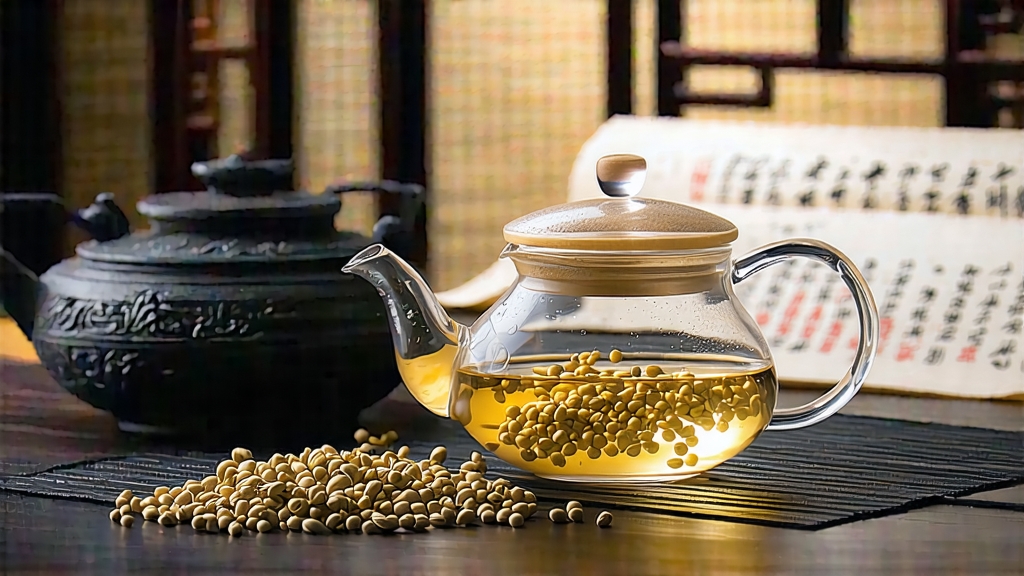
Among the six canonical families of Chinese tea, white tea is the least theatrical yet the most elusive. It is the quiet scholar who enters the room without sound and leaves a line of poetry in the air long after the gathering ends. Within this minimalist lineage, one cultivar stands as the purest distillation of leaf and time: White Hair Silver Needle, known in Chinese as Bai Hao Yin Zhen. Composed solely of unopened buds pluned during a fleeting spring window, the tea carries the moonlight of Fujian on its downy skin and the aroma of mountain mist in its breath. To international drinkers accustomed to the swagger of Assam or the smoke of Lapsang, Silver Needle can feel almost too subtle—until the third sip, when the cup begins to whisper stories of maritime trade routes, Song-dynasty emperors, and the soft patience of tea masters who are willing to wait for a leaf to become itself.
Historical roots
White tea’s written record first surfaces in the Song Dynasty (960-1279), when Emperor Huizong—an aesthete who valued tea above statecraft—praised “white buds of superior grade” in his treatise Daguan Chalun. Yet those early whites were compressed cakes fired for tribute, not the loose, sun-withered buds we steep today. The modern incarnation of Silver Needle crystallized during the mid-Qing era in the coastal counties of Fuding and Zhenghe, where improved roadways allowed freshly withered buds to reach port cities before oxidation darkened them. European merchants mistook the fuzzy buds for dried flowers, labeling them “white tea” on manifests that still circulate in London customs archives. Thus a Chinese regional specialty entered global imagination under a romantic misnomer it never bothered to correct.
Micro-terroir: two counties, two dialects of flavor
Although Silver Needle is protected under China’s Geographic Indication, the bureaucratic border splits personality along the Futun Mountains. Fuding, washed by East China Sea breezes, produces plump buds with a silver-green tint and a marine sweetness reminiscent of steamed crab roe. The cultivar of choice here is Fuding Da Bai Hao, a large-bud variety whose trichomes—those tiny white hairs—reflect light like powdered quartz, a natural sunscreen that also stores volatile aromatics. Cross the ridge into Zhenghe and the terrain climbs; cooler nights slow growth, yielding slimmer, needle-straight buds high in polyphenols. Zhenghe Da Bai delivers a steeper, more mineral cup, the difference between tasting Chablis after Muscadet. Neither is superior; they are dialects of the same language, and fluent drinkers learn to savor the accent.
Harvest calendar: when the mountain holds its breath
Authentic Silver Needle is picked only between early March and mid-April, on days when humidity drops below 65 % and temperature hovers between 15 °C and 20 °C. Bud length must exceed 2.5 cm but remain unopened; one millimeter too short and the liquor turns grassy, one petal unfurled and astringency creeps in. Experienced pluckers use a diagonal snap of the thumbnail rather than a tug, preventing bruising that would oxidize the bud shoulder. A full day’s work yields barely half a kilogram of fresh material, which shrinks to 100 g after withering. Such parsimony explains why Silver Needle can command prices higher than first-flush Darjeeling, yet the economics feel less like luxury and more like condensed time: three weeks of spring distilled into a single bowl.
Craft: the art of doing almost nothing
Once baskets arrive at the cottage, buds are spread on bamboo trays no thicker than a single layer. The first four hours are critical: indoor withering at ambient temperature invites enzymatic reactions that generate honey-like aldehydes. Masters shuffle the trays every twenty minutes, rotating edges to center so moisture evaporates evenly; the motion resembles a slow-motion flip of playing cards. After dusk, trays are moved to a screened corridor where mountain wind continues the work until dawn. No rolling, no pan-firing, no shaking—just air and patience. Around 7 a.m., when buds feel leather-stiff and emit a faint scent of lychee, they are transferred to a low-temperature dryer (40 °C) for twenty minutes, arresting oxidation at roughly 5–8 %. The final moisture target is 5 %, low enough to snap a bud in two, yet high enough to preserve the microscopic hairs that will shimmer in your glass.
Chemistry in the